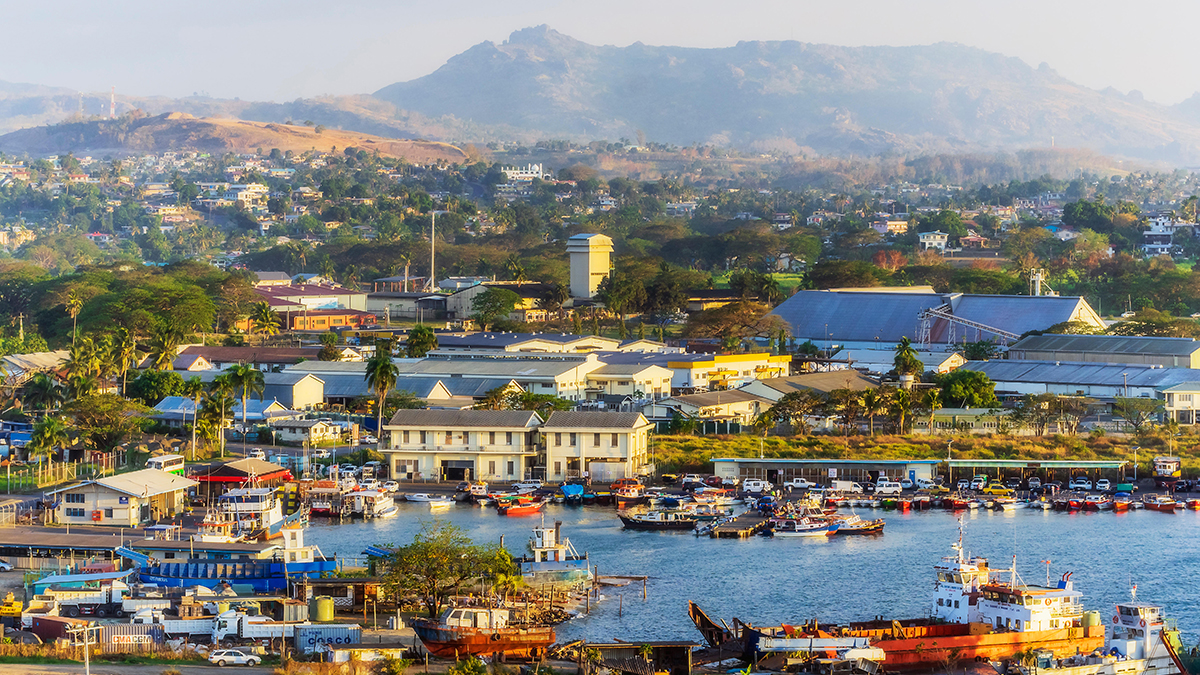In climate risk analysis, do not be blindsided by numbers
‘By the time we see climate impacts manifesting consistently in claims, the change will already have happened and it will be too late,’ Lloyd’s Mitchell-Wallace says
Re/insurers should think about climate data storylines, rather than fixating on modelling outputs, Lloyd’s director of portfolio risk management, Kirsten Mitchell-Wallace, says
Re/insurers that narrow their focus to a single extreme weather event are “on a fool’s errand” in their understanding of climate change, according to Lloyd’s director of portfolio risk management.
In an interview with Insurance Day, Dr Kirsten Mitchell-Wallace says the industry is unlikely ever to understand the full impact “in a really granular way”, so climate-conditioned catastrophe modelling should be seen as “one tool in the whole discussion about what climate risk means to a business”.
Informed decisions about climate risk would be better based on “communication of what we can know and what we can’t know and on what our risk appetite as a business is in the context of all that uncertainty”, she adds.
Better communication includes identifying the limitations of catastrophe modelling. “People want to understand the potential impact of climate change, but they also want to have one number that tells them whether there’s going to be a financial loss,” Mitchell-Wallace says.
“I’m really keen that, as an industry, we move more towards thinking about climate data storylines to explore the potential risk and don’t make the mistakes of the past where we get really fixated on model outputs. Models need to become one of the tools that help us explore the potential risks to our business.”
Value of models
Despite its limitations, the value of catastrophe modelling is clear. “What a fortunate position we are in, comparatively as an industry, to have the catastrophe models, because they are tools that allow us to really understand the risk associated with climate perils. And we have this ability to combine the hazard, the vulnerability of the structures and the financial information with the description of the exposures to get a loss distribution,” Mitchell-Wallace says.
“When we look around at understanding climate risk, a lot of people tend to work in separate disciplines or certainly historically did. And having catastrophe models, which cross all of the disciplines associated with risk, I think has given us a real advantage to have these tools as an industry.”
Catastrophe models are not always complete, however, and do not necessarily contain all aspects of the source of a potential loss. This means having to make adjustments to them and Lloyd’s has been doing a lot of work with the market on that over the past four or five years.
 The aftermath of 2017's Hurricane Harvey in Port Aransas, Texas
Tribune Content Agency LLC/Alamy Stock Photo
The aftermath of 2017's Hurricane Harvey in Port Aransas, Texas
Tribune Content Agency LLC/Alamy Stock Photo
For example, hurricane models historically did not have precipitation included in them, but rainfall rather than wind was the key driver of losses from 2017’s Hurricane Harvey. “It’s very important to understand what a model covers and what it doesn’t and make sure you are up to date and you have the complete sources of loss covered,” Mitchell-Wallace says.
Another limitation of catastrophe models is the length of history, which is used to calibrate the model, given the fact the climate is changing.
She says: “To develop a model, you need to understand the physical characteristics, frequency and severity of the events. If that history you are using is no longer representative of the risk then your model is no longer representative of the current risk, so one of the things we have said to the market is we expect the models they are using to be reflective of current-day risk. And when they provide us with a validation of that model, it needs to have a section in it, explaining why the model they are using is appropriate for today’s risk and the testing has been done on that.”
That validation is “up to the individual company” to decide, although many rely on model vendors to provide that information “because it’s a difficult question that requires quite a lot of technical understanding” and not all Lloyd’s users have scientific expertise in-house.
Climate risk understanding
Lloyd’s understanding of climate risk has evolved thanks to the time and money it has invested in learning about the science of climate change. This includes employing scientists and fostering links with academia. “As the science evolves, we’re going to get a clearer understanding of the impact of the risks. We know claims are already increasing and will continue to do so because of exposure and inflationary factors. Our key message is we really need to be prepared because, by the time we see these climate impacts manifesting consistently in claims, the change will already have happened and it will be too late,” Mitchell-Wallace says.
Scientists have reached “different levels of consensus” about the impact of climate change on the various weather perils, while climate modelling is “complicated and not very good at resolving extreme events”.
Mitchell-Wallace says: “We’re most certain about the impact of rainfall and sea level rise; those are virtually certain. And we know heavy precipitation will become more frequent and more intense globally. These factors are likely to increase rainfall-based flooding. But there are many other perils where the impact is less clear cut and I’d call out severe convective storm, particularly in the US, as well as tornado and hail, because it is less clear how they are going to be impacted in a warming world.”
It is “irksome”, she continues, when climate risk and climate change risk are treated as one concept. The industry is already familiar with climate risk – extreme weather events – but what it needs to learn more about is the risks associated with climate change. A good place to start is defining perils correctly.
“I’m really keen that, as an industry, we move more towards thinking about climate data storylines to explore the potential risk and don’t make the mistakes of the past where we get really fixated on model outputs. Models need to become one of the tools that help us explore the potential risks to our business”
Kirsten Mitchell-Wallace
Lloyd’s
“We don’t use the term ‘secondary’ perils at Lloyd’s and we never have because they can have really extreme impacts on the places they hit – humanitarian and also in terms of claims. It’s devastating for people who are affected by them, so to call them secondary is a bit minimising,” she says.
Instead, Lloyd’s calls them frequency perils, which include flood, wildfire, tornado and severe convective storm, “because we see these much more often”.
The notion of secondary perils was “invented” at least a decade ago to cover unmodelled weather events, she adds, and because the losses they produced were seen as less severe than the so-called primary perils.
The level of attention paid to frequency perils relates to how individual re/insurers use catastrophe modelling and the focus on pricing or for accumulation to set capital. Mitchell-Wallace says: “Frequency perils are really important to pricing, because we see them in aggregate annually, but they are as important to capital, which will tend to be driven by larger peak peril losses. Frequency perils may form a portion of the risk, but they’re never going to drive it, so you need to think about the way you’re using the models and also how you’re talking about the perils.”
New peak perils
Lloyd’s announced in March it has four new peak perils: US flood, US severe convection storm, US wildfire, and New Zealand earthquake. Mitchell-Wallace says these are now material perils for Lloyd’s and as material as the lowest of the LCM5 peak perils, which was Japan typhoon, in the tail. “We are responding to a change in our underlying portfolio, and we’ve extended the definition of our peak perils because of the size of their contribution to the overall Lloyd’s potential loss,” she says.
Lloyd’s previously had five peak perils: north Atlantic hurricane, North America earthquake, European windstorm, Japan earthquake and Japan typhoon. “If the risk from another peril approaches the lowest of those five or it’s up to three-quarters of the way above that then we include it in our leaderboard of perils,” she adds.
Lloyd’s collects data from syndicates annually, looking at the relative size of all the perils outside its peak perils list. “We’re constantly monitoring to see if things are growing and whether they may need to be included in our explicit representation,” she says. “We’re pretty confident at the moment the four peak perils should capture the changes we need for at least a couple of years.”
Mitchell-Wallace highlights how Lloyd’s enables collaboration via FutureSet, an openly accessible global platform and community, to create and share risk insight, expertise and solutions to the world’s most challenging problems. “Lloyd’s is a convener and our ability to influence the market as a whole helps with finding solutions that are global,” Mitchell-Wallace says, “and climate change requires us to have more sophisticated and more innovative products globally.”
An example of this is Lloyd’s collaboration with Moody’s Analytics to develop a tool to help quantify greenhouse gas emissions across managing agents’ underwriting and investment portfolios.
Product innovation is key, she continues, highlighting some of the graduates of Lloyd’s Lab: Kita’s carbon purchase protection cover; FloodFlash’s parametric flood insurance sensor; Yokahu’s parametric insurance product for financial institutions; and FireBreak’s mobile app for self-inspection of property wildfire risk.
“Lloyd’s is uniquely placed to get involved with global influencing and really link into the broader sustainability agenda as well,” she says, adding she would like to see the development of products that reward climate mitigation and adaptation efforts.
She concludes: “Re/insurers should think qualitatively about risk because that will help us explore the consequences of climate change in a way that mitigates the risk for which numbers could provide false comfort.”



